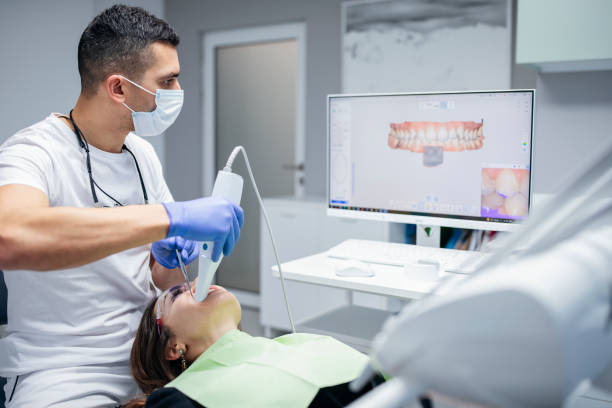Call Us Today
The Rise of Digital Dentistry: Exploring 3D Printing and CAD/CAM Technology

Introduction:
In recent years, the field of dentistry has witnessed a remarkable transformation with the advent of digital technologies such as 3D printing and Computer-Aided Design/Computer-Aided Manufacturing (CAD/CAM). These advancements have revolutionized traditional dental practices, offering a range of benefits including enhanced precision, efficiency, and patient comfort. Let’s delve into the fascinating world of digital dentistry and explore how 3D printing and CAD/CAM technology are shaping the future of oral healthcare.
Precision and Customization:
- One of the key advantages of 3D printing and CAD/CAM technology in dentistry is the ability to create highly precise and customized dental restorations. With traditional methods, dental prosthetics such as crowns, bridges, and veneers were often fabricated by hand, leading to variations in fit and aesthetics. However, with CAD/CAM technology, dental professionals can now digitally design restorations with meticulous accuracy, ensuring a perfect fit for each patient. Moreover, 3D printing allows for the fabrication of complex dental structures with intricate details, further enhancing the quality and functionality of the restorations.
Streamlined Workflow:
- Another significant benefit of digital dentistry is the streamlining of the dental workflow. Traditionally, the process of creating dental restorations involved multiple steps, including taking physical impressions, sending them to a dental lab for fabrication, and then fitting the final restoration to the patient. This process was time-consuming and prone to errors. However, with CAD/CAM technology and in-house 3D printing capabilities, dental professionals can now complete the entire process in a single visit. Digital impressions are captured using intraoral scanners, eliminating the need for messy impression materials. The restorations are then designed digitally and fabricated chairside using 3D printers, allowing for same-day delivery of high-quality dental prosthetics.
Patient-Centric Care:
- Digital dentistry has ushered in a new era of patient-centric care, offering enhanced comfort and convenience to patients. With traditional methods, patients often had to endure multiple visits to the dentist for the fabrication and fitting of dental restorations. However, with the integration of 3D printing and CAD/CAM technology, patients can now benefit from faster treatment times and reduced chairside discomfort. Moreover, digital technologies enable dental professionals to involve patients in the treatment planning process by visualizing the proposed restorations digitally before they are fabricated. This not only improves patient satisfaction but also ensures better communication and collaboration between the dentist and the patient.
Conclusion: